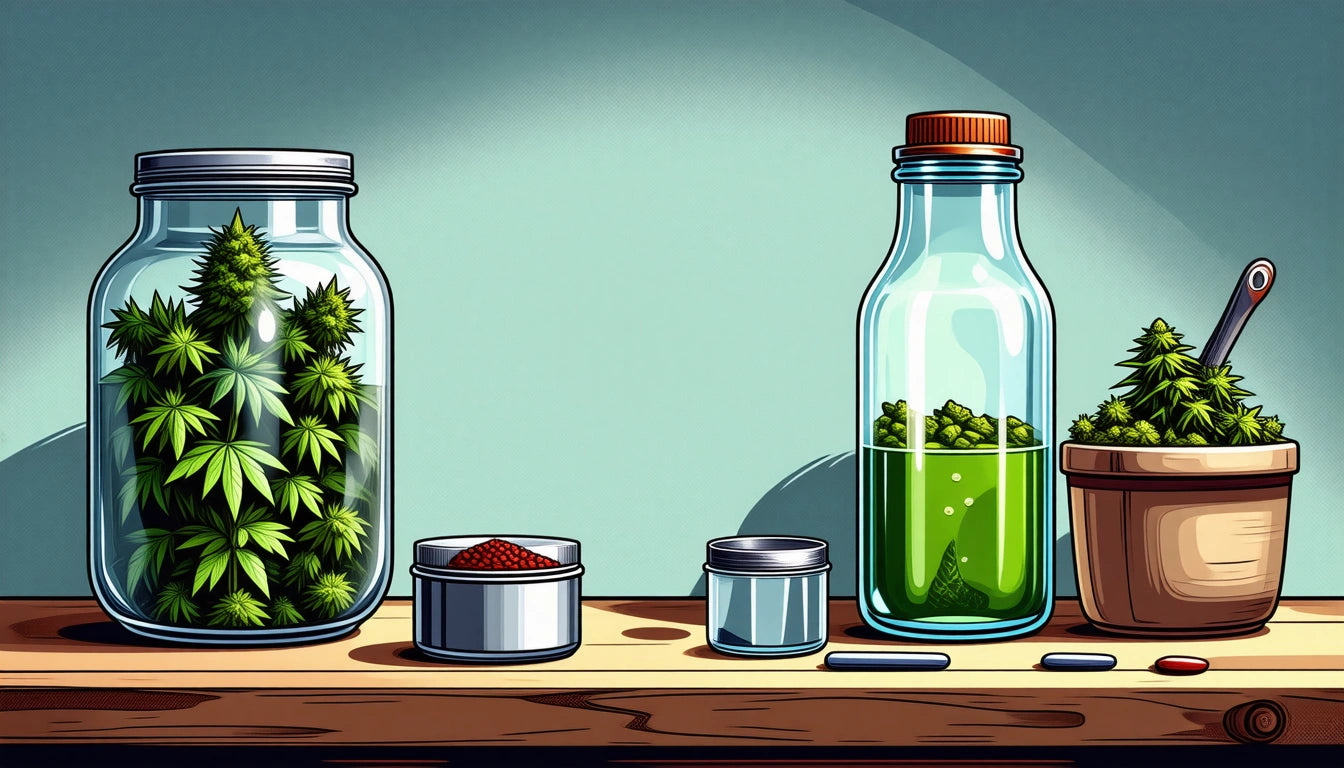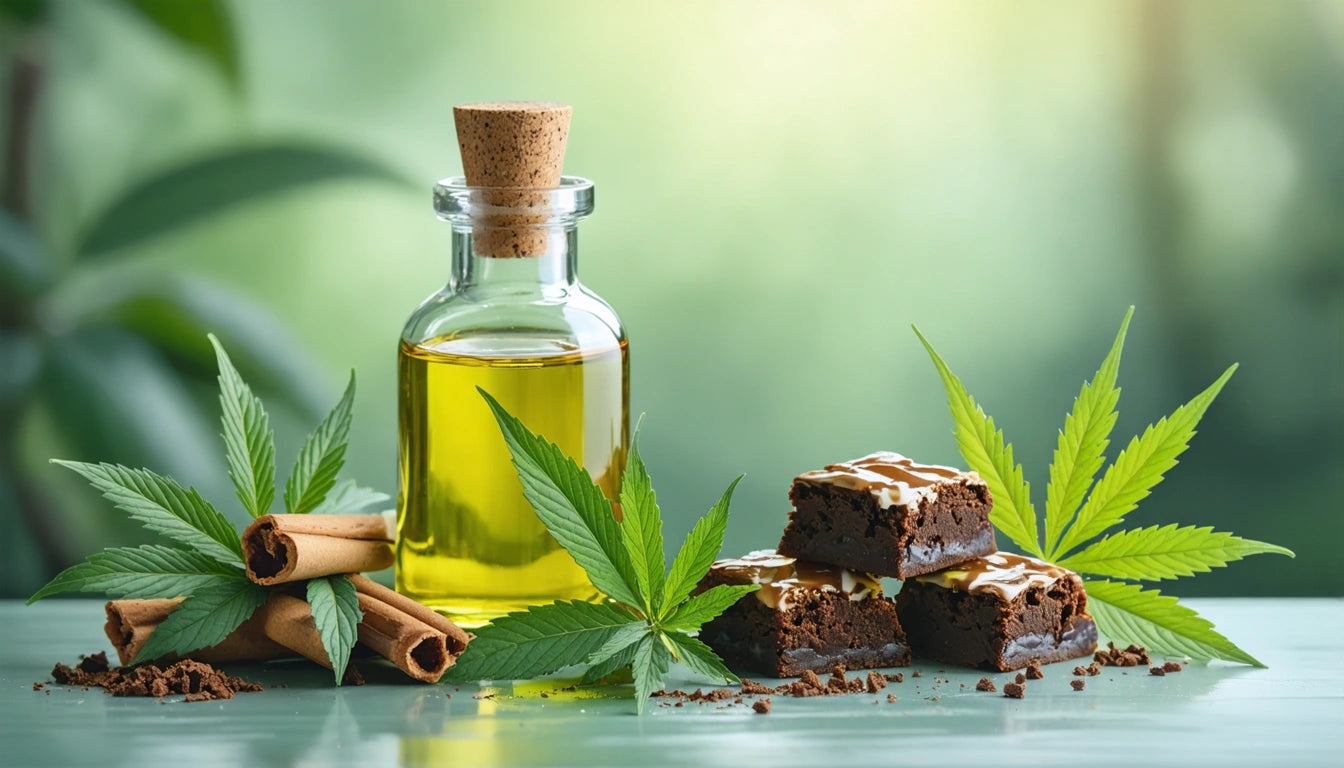Table of Contents
How to Decarb Weed at Home: A Comprehensive Guide
Decarboxylation might sound like complex chemistry, but it's actually a straightforward process that transforms raw cannabis into its active form. Whether you're making edibles, tinctures, or topicals, knowing how to decarb weed properly is essential for unlocking the full potential of your herb. This guide walks you through everything you need to know about decarboxylation at home.
What is Decarboxylation and Why It Matters
Before diving into methods, it's important to understand what happens during decarboxylation. Raw cannabis contains THCA and CBDA, which are non-psychoactive acidic compounds. When heated, these compounds lose a carboxyl group (COOH) and convert to THC and CBD, the active compounds that produce cannabis's effects.
Without proper decarboxylation, your edibles and other cannabis products won't deliver the expected potency or effects. As explained in our guide on understanding decarbing, this process is what activates the compounds that interact with your endocannabinoid system.
Traditional Oven Method: The Most Accessible Approach
The oven method is the most common way to decarb weed at home because it requires no special equipment.
What You'll Need:
- Cannabis flower (ground coarsely)
- Baking sheet
- Parchment paper
- Oven
- Oven thermometer (recommended for accuracy)
Step-by-Step Instructions:
- Preheat your oven to 240 °F (115 °C). Use an oven thermometer for accuracy as many ovens run hotter or cooler than their settings indicate.
- Break up your cannabis into small pieces, but avoid grinding it too finely.
- Spread the cannabis evenly on a parchment-lined baking sheet.
- Bake for 30-40 minutes. Older, drier cannabis may require less time while fresher material might need the full 40 minutes.
- The cannabis should turn from green to a light to medium brown and should be dry but not burnt.
- Remove from the oven and let cool completely before handling or storing.
According to our detailed guide on decarb methods and temperatures, maintaining the right temperature is crucial for effective decarboxylation without degrading beneficial compounds.
Mason Jar Method: Minimizing Odor While Decarbing
If discretion is a concern, the mason jar method contains much of the smell associated with decarboxylation.
What You'll Need:
- Cannabis flower
- Oven-safe mason jar with lid
- Baking sheet
- Oven mitts
- Towel
Step-by-Step Instructions:
- Preheat your oven to 240 °F (115 °C).
- Break up your cannabis and place it in the mason jar, then seal the lid (not too tight).
- Place the jar on its side on a baking sheet.
- Put the baking sheet in the oven for 30-40 minutes.
- Every 10 minutes, use oven mitts to remove the jar, shake it gently to mix the cannabis, and return it to the oven.
- After decarbing, wrap the hot jar in a towel and let it cool completely before opening to prevent odor escape.
For those concerned about smell, this method offers a significant advantage while still effectively decarboxylating your cannabis, as detailed in our complete guide to decarboxylation techniques.
Sous Vide Method: Precision Decarboxylation
For those seeking precision, the sous vide method offers the most controlled environment for decarbing.
What You'll Need:
- Cannabis flower
- Sous vide precision cooker
- Vacuum-sealed bag or ziplock bag
- Large pot or container
Step-by-Step Instructions:
- Set your sous vide device to 203 °F (95 °C).
- Grind your cannabis coarsely and seal it in a vacuum bag or ziplock bag using the water displacement method.
- Once the water reaches temperature, submerge the sealed bag.
- Decarb for 90 minutes.
- Remove the bag, let it cool, then open it in a well-ventilated area.
The sous vide method is ideal for those who want to eliminate guesswork and achieve consistent results. For commercial operations, specialized filling equipment for cannabis products can help scale up production once you've perfected your decarboxylation process.
What to Do With Decarbed Weed: Practical Applications
Once you've successfully decarbed your weed, the possibilities are extensive:
- Edibles: Infuse into butter or oil for baking or cooking
- Tinctures: Soak in high-proof alcohol or glycerin
- Capsules: Fill empty capsules for precise dosing
- Topicals: Mix into creams or salves for localized relief
- Direct consumption: While less common, decarbed cannabis can be consumed directly
For more ideas on what to do with decarbed weed, check out our guide on smoking and eating decarbed cannabis.
Tips for Successful Decarboxylation Every Time
Regardless of which method you choose to decarb your herb, these tips will help ensure success:
- Use an oven thermometer to verify temperatures, as most ovens have significant variance
- Don't grind too finely to avoid burning the cannabis
- Store properly in an airtight container away from light and heat
- Label clearly with strain and decarb date
- Start with small batches until you perfect your technique
The optimal time and temperature for decarbing cannabis can vary based on your specific goals. Our guide on optimal decarbing parameters explores these variables in depth.
Whether you're a home enthusiast or scaling up a commercial operation, mastering how to decarb weed at home is an essential skill that opens up a world of possibilities beyond smoking. With practice, you'll develop a feel for the process that works best for your specific needs and equipment.











Leave a comment
All comments are moderated before being published.
This site is protected by hCaptcha and the hCaptcha Privacy Policy and Terms of Service apply.